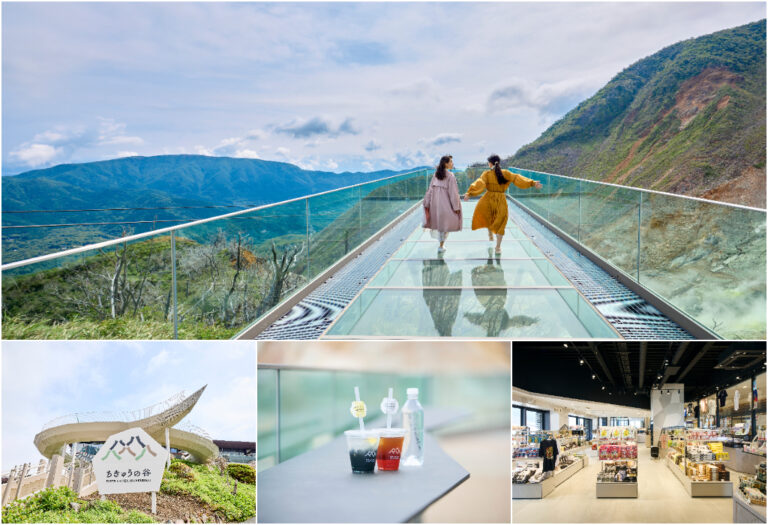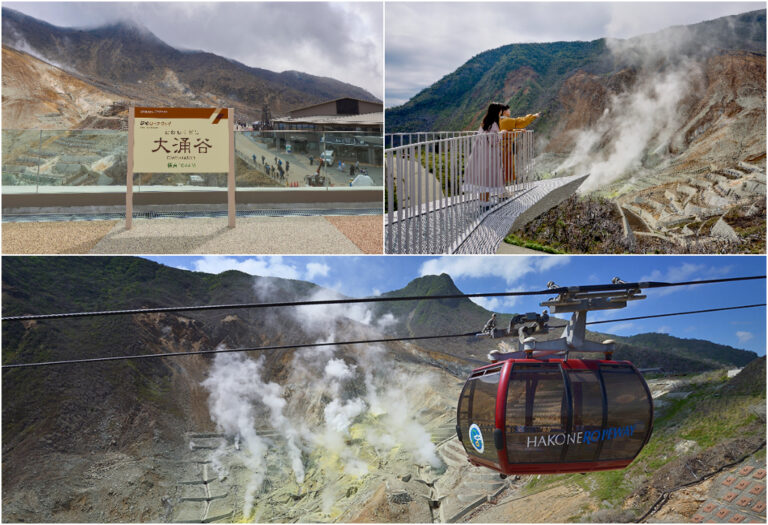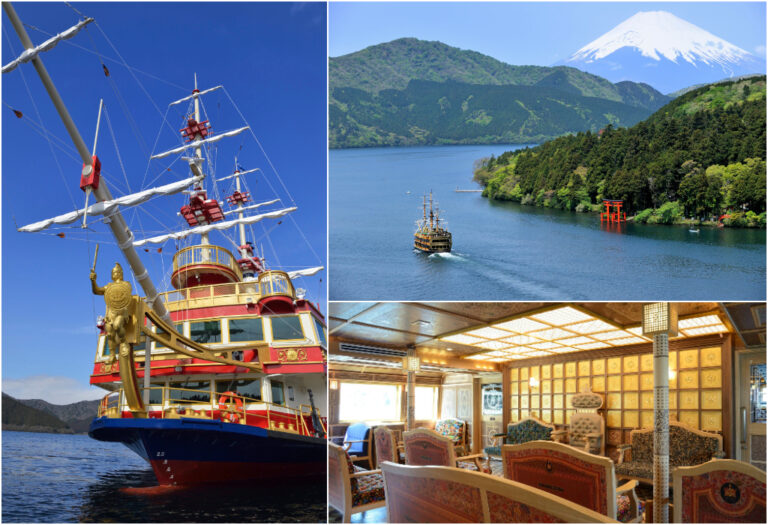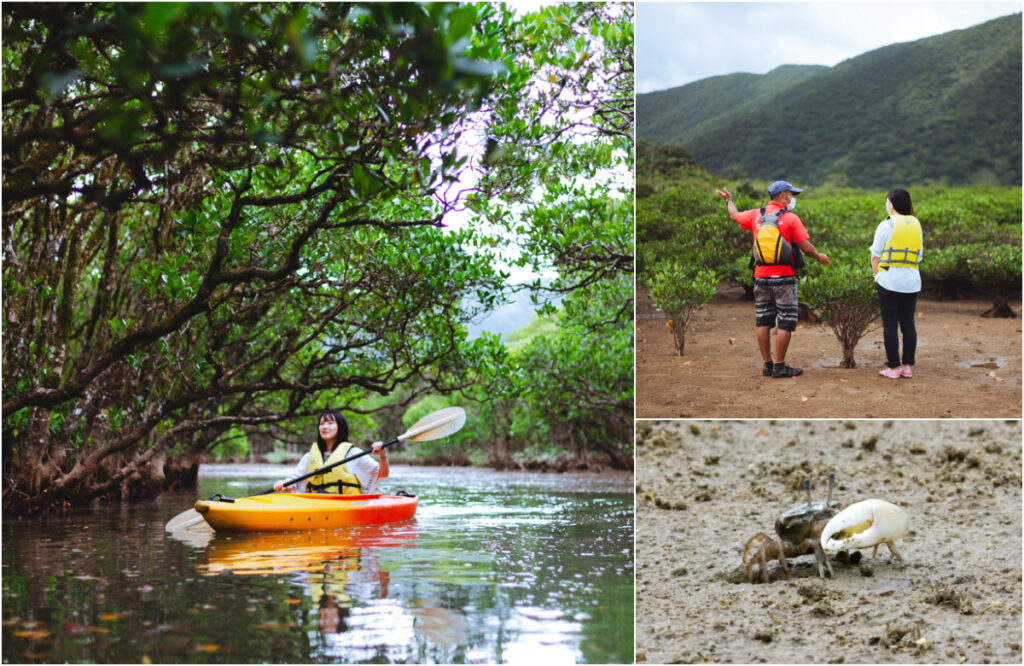
Waterside forest, mangrove. The mangroves of Amami Ōshima are the second largest in the country at 700,000 m² after Okinawa, and various creatures live in an environment where seawater and fresh water are mixed. Let's observe the mystery that changes the expression at the low tide of high tide, riding a canoe from the surface of the water!
The natural beauty of changing mangroves that can be felt because it is a canoe

Mangrove is a generic name for plants that live on riverbanks where seawater and freshwater mix in tropical and subtropical regions. In Sumiyo, the river that merges with the Sumiyo River and the Yakugachigawa (Yakugachigawa) has a mankloaf consisting of Ohirgi and Mehirgi.
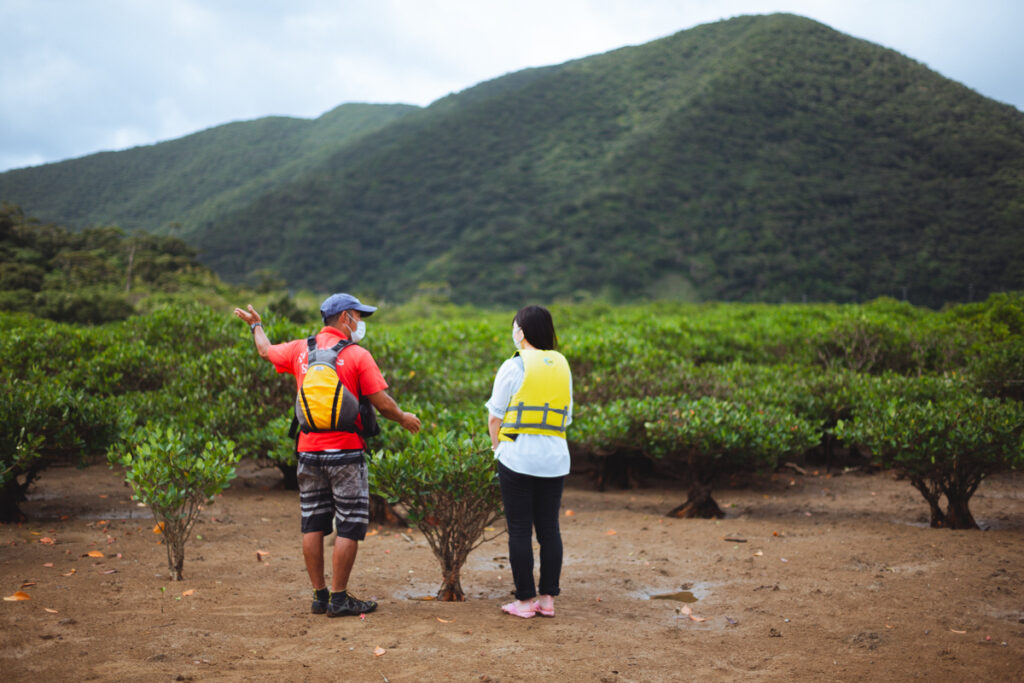
What I experienced this time was "Kuroshio no Mori Mangrove Park" where you can experience canoeing for beginners. Guided tours are conducted five times a day, and you can observe from the surface of the water the whole nature that grows in the mangrove forest, even at high tide or low tide. The clothes are easy to move around the arm, and it is safe to dress up even if it gets wet. You can rent out your flip-flops for free.
Since the canoe experience that can be enjoyed in one tour depends on the tide level at that time, it is best to check the tide level time according to the purpose, such as the time of the tide when you can land on the tidal flat, the time of the tide when you enter the mangrove tunnel, etc.
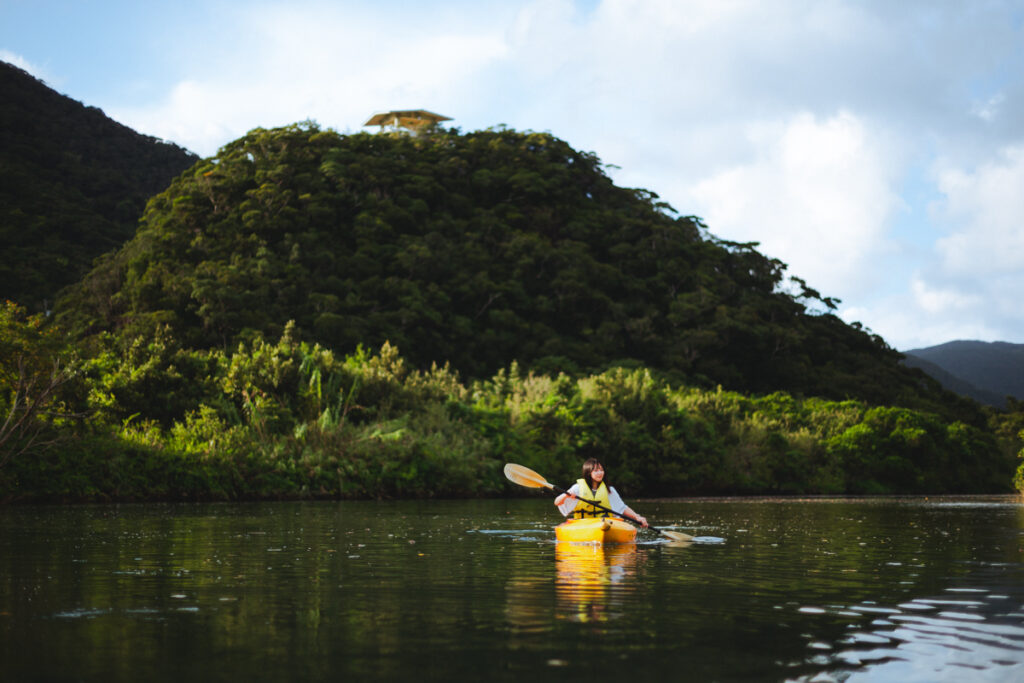
It is at high tide that you can view the scenery of the shore. The flow of the river is calm, and even a beginner can paddle without difficulty. If the water level rises at high tide, a tunnel of mangrove appears on a small tributary, and it is exciting to be able to canoe through it!

At low tide, it is possible to land on the mud flats with Mr. Guide's lead. You can observe small creatures living on the shore and mangrove trees such as Ohirgi and Mehirgi in the immediate vicinity. Mr. Guide's story is "I see ~!"
The art of living in mangroves, the wisdom of which is involuntarily "I see ~!"
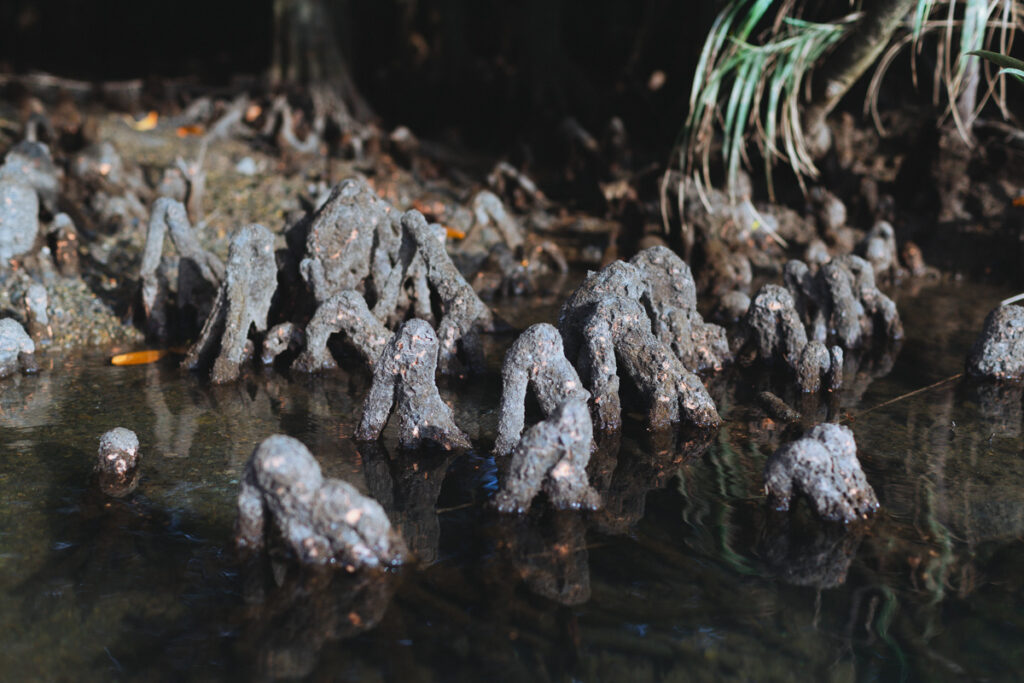
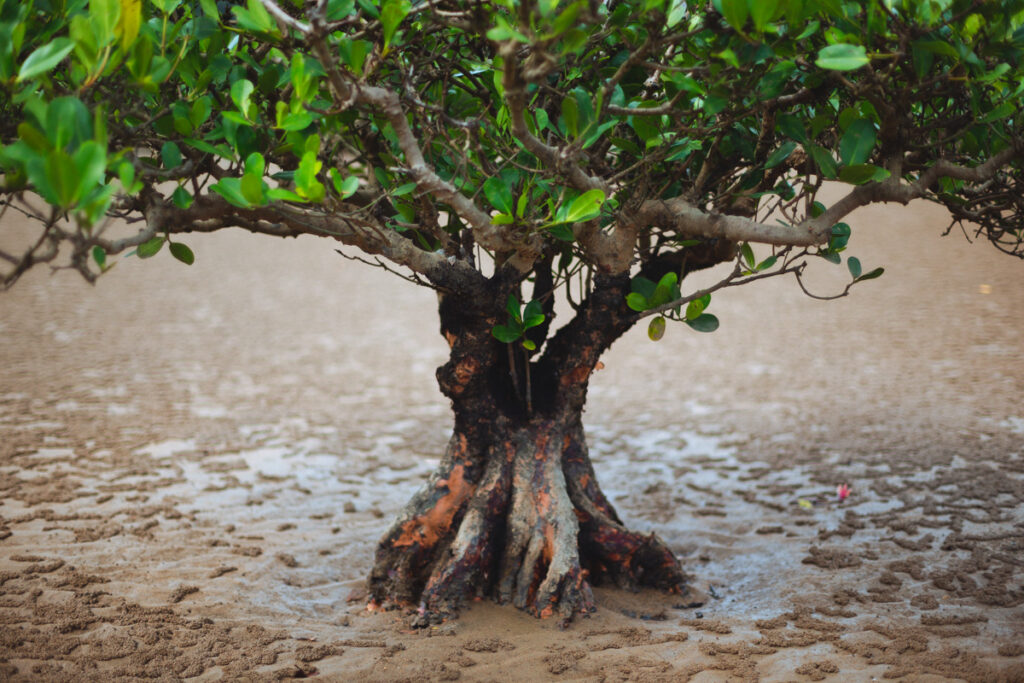
Attention to the roots of mangroves. The hirgi tree, which makes up the main living mangroves, has an "air root" in which the roots breathe, and has a different shape in the hirgi, the hirgi. Ohirgi has a knee root shaped like a human knee, and Mehirgi has a plate-shaped plate root, both of which expose roots on the water surface at low tide to create a unique landscape.
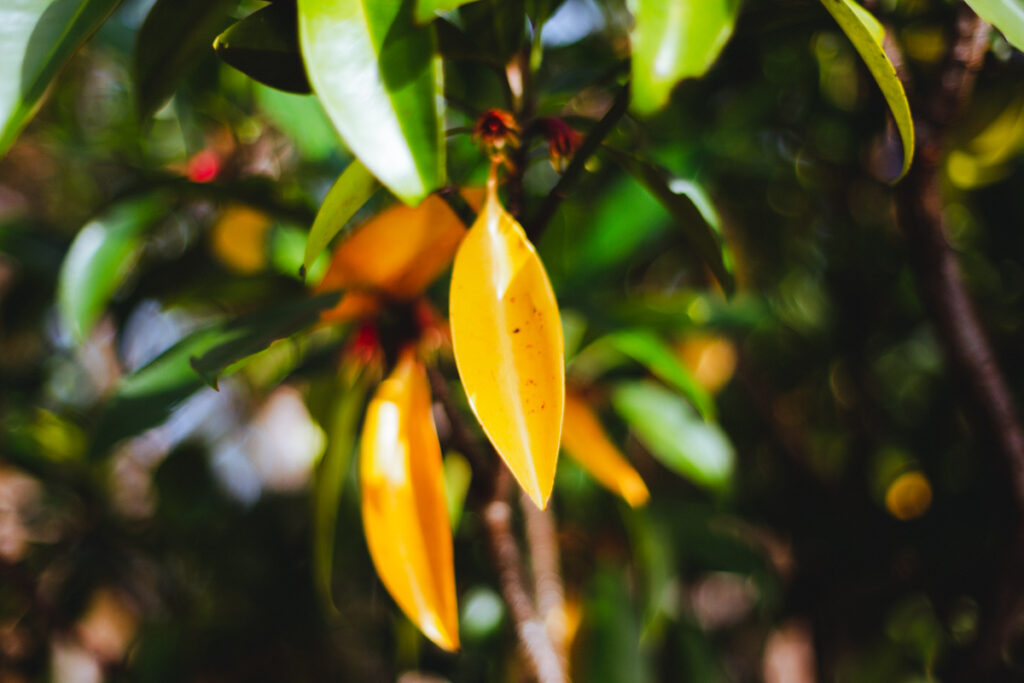

Mangroves, which grow in brackish waters where seawater and fresh water are mixed, are also interesting in the art of native life. Ohirgi expel the salt of the tide from within the tree, so exclamating at its profound natural mechanics, such as having the special properties of sucking up salt on some of the leaves, withering them on purpose, and dropping them!
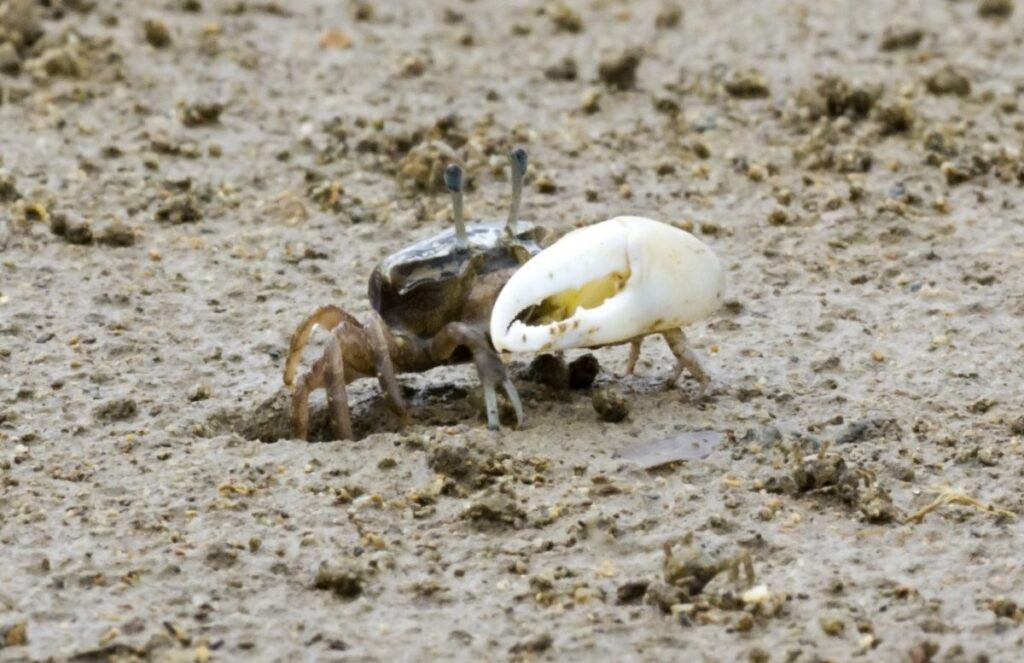

The creatures that represent their appearance on the mudflats, including the fiddler crabs and the southern crabs with a pair of scissors that are maximized, and the southern-milled goby with a lovable look, the ecosystems that mangroves nurture are individual and full of charm.
Enriched activities at the roadside station "Kuroshio no Mori Mangrove Park"
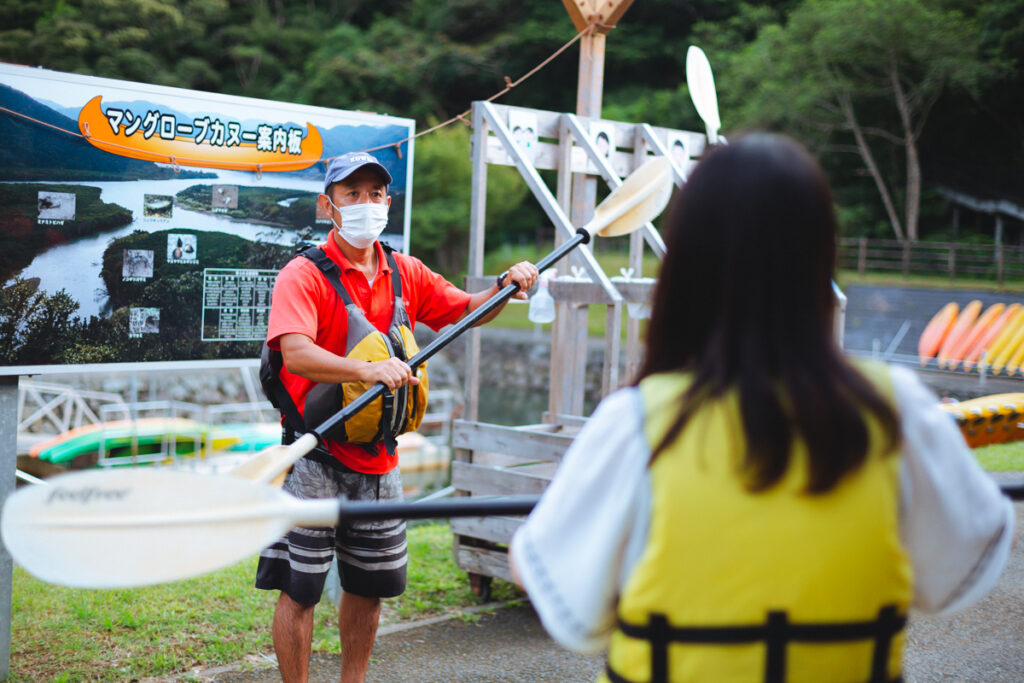
"Kuroshio no Mori Manglow Park", which is attached to Amami Ōshima's only roadside station, "Amami Ōshima Sumiyo". It features an exhibition hall where you can learn about mangrove forests, a park golf course, and a dining hall, making it a base for activities and recreation. There is also a walking tour of the night so check it out on HP etc.
■ Kuroshio no Mori Mangrove Park
Address: 478 Ishihara, Sumiyo-cho, Amami-shi, Kagoshima
TEL:0997-56-3355
Opening hours: 9-18 o'clock (final entry ~ 17:30), 11-February from 9:00-17:30 (final entry ~ 17:00)
Holds: No holidays (there is temporary closure due to weather, etc.)
Free entrance fee. Canoe experience: 60-minute course 3000 yen for adults, 2000 yen for elementary and junior high school students, free for toddlers. 90-minute course 4000 yen for adults, 2500 yen for elementary and junior high school students, free for toddlers. Ground golf experience: 500 yen for adults, 300 yen for elementary and junior high school students, free for toddlers
- This article is created based on the contents of "Rurubu & more."
- The data listed is as of May 2025. Prices, business hours, regular holidays, menus, etc. may change or may not be available due to temporary holidays. Please check in advance when using it, as the content may change.
- The holiday of stores and facilities omits the year-end holiday, Obon holiday, Golden Week, and temporary holidays in principle.
- The published fees are in principle the fee including consumption tax that we have confirmed at the time of the interview, and the entrance fee is the adult fee if there is no special mention.
- In principle, the published times are open (hall) to closed (hall). Please note that the last order or entrance (hall) time is 30 minutes to 1 hour before the normal closing (hall) time. The last order is denoted LO.
- For the spring quality and efficacy of the hot springs listed, manuscripts are prepared based on answers from each facility.

